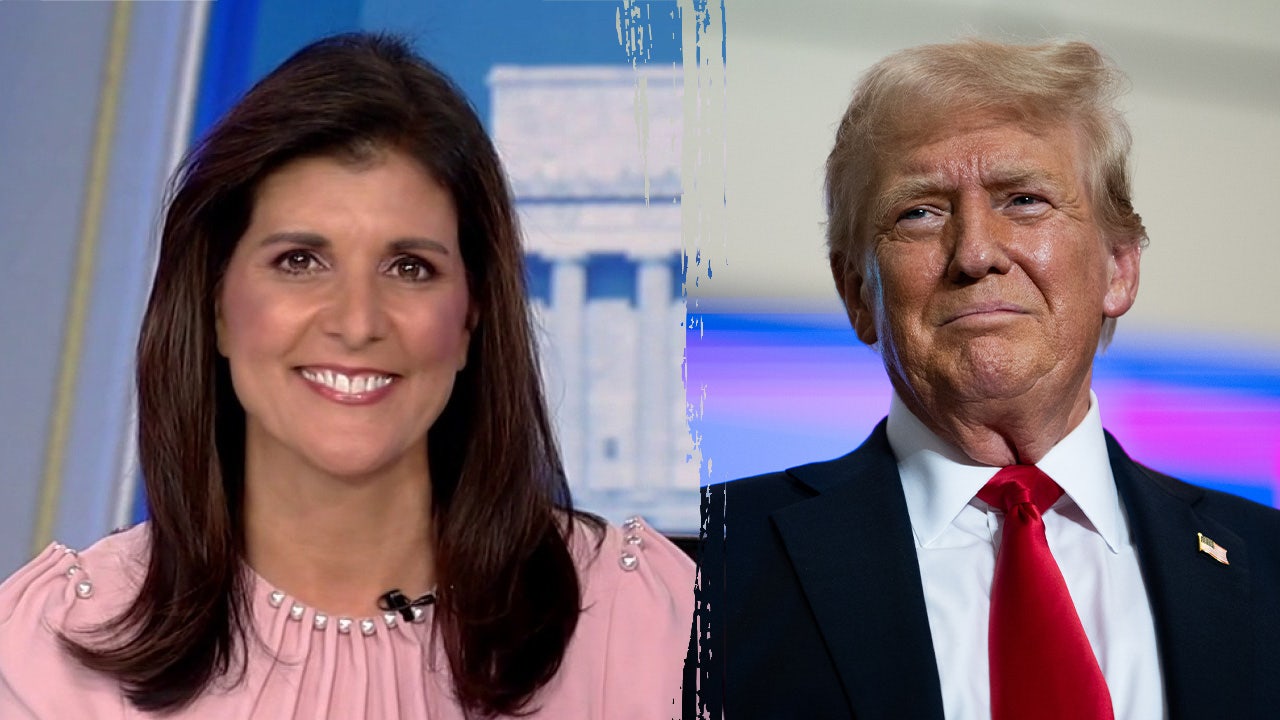Finance
PNB Housing Finance shares jump over 8% on recovery of ₹784 crore NPA

PNB Housing Finance share price jumped more than 8% on Monday after the company announced the recovery of ₹784 crore worth of corporate non-performing account. PNB Housing Finance shares rallied as much as 8.4% to ₹688.10 apiece on the BSE.
PNB Housing Finance through its focused and multi-pronged resolution strategy has successfully resolved and fully recovered its large corporate Non-Performing account of ₹784 crore, which is 1.3% of loan asset as on 30th June 2023, the company said in a regulatory filing on Saturday.
Read here: PNB Housing Finance recovers NPA account of ₹784 crore, resolved through ARC sale
“The account has been resolved on 19th August 2023 through an ARC sale under Swiss Challenge method as per the Reserve Bank of India (Transfer of Loan Exposures) Directions, 2021,” PNB Housing Finance said.
As on June 30, 2023, the Gross NPA of the company stood at ₹2,270 crore, which is 3.76% of loan assets. Its loan assets were at ₹60,395 crore.
During the first quarter of FY24, PNB Housing Finance reported a 47.8% year-on-year (YoY) rise in its consolidated net profit to ₹347.32 crore. The company had posted a profit of ₹234.96 crore in the year-ago period.
Also Read: Titan share price gains as analysts believe CaratLane stake purchase to be value accretive
As of June 30, the company’s Asset Under Management (AUM) expanded by 2% YoY to ₹67,340 crore.
PNB Housing Finance shares have rallied more than 25% YTD and the shares have given returns of over 85% in the last one year period.
At 12:30 pm, PNB Housing Finance share price was trading 5.21% higher at ₹667.85 apiece on the BSE.
Catch Live Market Updates here
Download The Mint News App to get Daily Market Updates.
More
Less
Updated: 21 Aug 2023, 12:33 PM IST

Finance
What Trump’s second term could mean for student debt
Donald Trump’s Oval Office return could mean a major rollback of efforts to relieve student debt — at least if his campaign comments and first-term record are any indicator.
During his last administration, Trump took steps to limit debt cancellation for students defrauded by their schools and proposed eliminating the Public Service Loan Forgiveness program. Conservative activist groups have urged the president-elect to take similar action this time around.
And in 2023, when the Supreme Court struck down President Joe Biden’s first stab at a sweeping student debt forgiveness program, Trump applauded. The attempt to wipe out approximately $430 billion owed by borrowers was “very, very unfair to the millions and millions of people who have paid their debt through hard work” he told a crowd in New Jersey, adding that it was just “a way to buy votes.”
In all, the Biden administration has managed to waive $175 billion of student loans through various programs. But several of its major initiatives aimed at further reducing Americans’ $1.7 trillion pile of education loans have stalled in the face of legal challenges or are still in the process of being written by regulators, giving Trump ample room to try to unwind them if he chooses.
Based on a review of Trump’s website and platform, as well as conversations with advocates, it does not appear that Trump’s campaign released any specific proposals regarding student debt, though he has called for eliminating the Department of Education. A campaign spokesman did not respond to a request for comment about the incoming administration’s plans.
Here’s what debt cancellation initiatives remain in limbo — and what could change.
Read more: Do I qualify for student loan forgiveness?
Biden’s Plan B
The Biden administration’s second attempt to craft a wide-scale student loan forgiveness — nicknamed “Plan B” — looks to be in peril. In April, the Department of Education proposed new rules that would allow it to waive debt for an estimated 30 million Americans, including former students who owed more than their original principal or had been repaying their balances for more than 20 years.
That plan has been repeatedly blocked from going into effect thanks to a lawsuit by Republican state attorneys general. Trump’s Department of Education could shelve it for good by simply declining to finalize the program’s rules, since they were never officially completed. The same goes for a preliminary proposal the Biden administration unveiled last month that would have allowed it to clear away debts for borrowers facing financial hardships.
Finance
Multilateral banks are key to financing the fight against global warming. Here is how they work
As climate change leads to a seemingly endless stream of weather disasters around the world, countries are struggling to adapt to the new reality. Preparing to better withstand hurricanes, floods, heat waves, droughts and wildfires will take hundreds of billions of dollars.
And then there is confronting the root cause of climate change—the burning of fossil fuels like coal, gasoline and oil—by transitioning to clean energies like wind and solar.
That will take trillions of dollars.
Enter climate finance, a general term that means different things to different people but boils down to: paying for projects to adapt to and combat the cause of climate change. Financing related to climate change is especially important for developing countries, which don’t have the same resources or access to credit that rich countries do.
International mega banks, funded by taxpayer dollars, are the biggest, fastest-growing source of climate finance for the developing world. Called multilateral development banks because they get contributions from various countries, there are only a handful of these banks in the world, the World Bank the largest among them.
How these banks allocate resources are some of the weightiest decisions made in defining how poorer nations can respond to climate change. They were a key reason why, in 2022, the world met a goal countries had set in 2009 to supply developing nations with $100 billion annually to address climate change.
At the annual U.N. climate conference that opens Monday in Azerbaijan, global leaders are expected to discuss how to generate trillions of dollars for climate finance in the years to come. The nonprofit research group Climate Policy Initiative estimates the world needs about five times the current annual amount of climate financing to limit warming to 1.5 C (2.7 degrees F) since the late 1800s. Currently, global average temperatures are about 1.3 C (2.3 degrees F) higher.
A new goal needs to reach higher and hold institutions and governments accountable to their promises, said Tim Hirschel-Burns, an expert at Boston University’s Global Development Policy Center.
“The core of it is getting a goal that is going to catalyze the actions that fills the really significant climate finance gap that developing countries face, which is much bigger than $100 billion,” he said.
As the international community has come to accept the reality of climate change, the debate has shifted to the question of where the money to fund the energy transition will come from, said Dharshan Wignarajah, director of Climate Policy Initiative’s London-based office.
“The question is not ‘are we going to transition?’, but ‘how quickly can we engineer the transition?’” said Wignarajah, who helped lead the climate talks, called the Conference of Parties, when the United Kingdom was host in 2021. “That has forced finance to be ever-more prominent at the COP discussions, because ultimately it comes down to who pays.”
FILE – People examine the damage at an area badly affected by a flash flood in Tanah Datar, West Sumatra, Indonesia, May 13, 2024. (AP Photo/Ali Nayaka, File)
Developing countries most dependent on multilateral banks
Developing nations are much more reliant on these banks for financing climate projects than industrialized countries.
In the U.S. and Canada, commercial banks and corporations provided funding for more than half of climate-friendly projects in 2022, according to Climate Policy Initiative. In sub-Saharan Africa, those private lenders only accounted for 7%.
This is because it is harder for developing countries to get low interest rates.
“If you’re Kenya, and you want to borrow from private lenders, they might charge you 10% interest rates because your credit rating isn’t very good,” Hirschel-Burns said.
But the multilateral banks have better credit ratings than many countries do. For example, the International Development Association — an arm of the World Bank and the top international aid provider to Kenya — has the highest possible rating from Moody’s Investor Service, while Kenya itself has a junk rating.
The banks borrow money with that better rating, then lend to developing countries in turn, offering a more reasonable rate than governments could get if they borrowed directly from private lenders.
Some bank projects work against climate goals
The multilateral banks’ development goals are wide-ranging. They seek to improve people’s health and the environment, expand energy access and end poverty. Addressing energy access has meant the banks have provided billions of dollars for fossil fuel power plants, according to an AP analysis, though their policies have improved and fewer such projects have been funded in recent years.
Investment in fossil fuels continues to rise worldwide, reaching $1.1 trillion in 2024, according to the International Energy Agency. And multilateral banks continue to rank among the biggest funders of fossil fuel-prolonging projects, helping to “lock in a high-carbon pathway” for countries, according to a report by the Clean Air Fund, which lobbies for the funding of projects to improve air quality.
“This is development aid we’re talking about, and it should be assisting countries to leapfrog,” said Jane Burston, CEO of the Clean Air Fund, referring to the idea that developing countries could industrialize with renewable energies and skip over development that rich nations historically made with fossil fuels.
“It’s baffling why development assistance is being given to something that continues to make people unhealthy as well as harms the planet,” she added.
FILE – James Tshuma, a farmer in Mangwe district in southwestern Zimbabwe, stands in the middle of his dried up crop field amid a drought, in Zimbabwe, March, 22, 2024. (AP Photo/Tsvangirayi Mukwazhi, File)
Seemingly contradictory actions can be seen in a loan made by an arm of the World Bank, the International Bank for Reconstruction and Development. It loaned $105 million toward rehabilitating coal plants in India, with their last loans toward the project going out in 2018, according to an Associated Press analysis of data from the Organization for Economic Cooperation and Development.
Coal spews carbon pollution, contributing to climate change and creating breathing problems for people who are exposed. However, the improvements made coal plants more efficient and reduced their greenhouse gas emissions, according to project documents.
The Clean Air Fund’s report estimated the World Bank provided $2.7 billion in “fossil fuel prolonging finance” between 2018 and 2022. During that time, the bank also loaned about 32 times the amount for renewables as they did for non-renewables in India, including $120 million for rooftop solar.
“Renewable energy support is always our first choice as we work to provide access to electricity to the nearly 700 million people who still cannot power their homes, schools, hospitals, and businesses,” a World Bank spokesperson said in a statement.
The bank’s policies still “selectively support natural gas as a transition fuel” if its research shows the project is low risk to the climate, the spokesperson said. The bank’s recent policies require rigorous vetting for every project to make sure its investments reduce climate impacts.
The World Bank delivered $42.6 billion in climate finance in its most recent fiscal year, a 10% increase from the year before. And at the most recent COP, the bank promised nearly half of its lending will soon go toward climate finance.
In Vietnam, about half of power generation comes from fossil fuels, primarily coal power. The Asian Development Bank loaned about $900 million on coal in Vietnam, with their spending on the fossil fuel in the country ending in 2017. The bank’s updated climate policies “will not support coal mining, processing, storage, and transportation, nor any new coal-fired power generation,” the bank said in a statement. The bank put $9.8 billion toward climate finance in 2023, and aims to finance $100 billion in climate-friendly projects between 2019 and 2030.
The country’s biggest growth area for energy is in wind. The Global Energy Monitor ranks Vietnam seventh in the world in planned wind power. And the Asian Development Bank committed about $60 million in loans toward wind energy in Vietnam between 2021 and 2022.
FILE – Residents rescue kittens from the roof of a flooded home in Cobija, Bolivia, Feb. 28, 2024. (AP Photo/Juan Karita, File)
The banks have made broad commitments in recent years to align with the landmark 2015 Paris Agreement. But those promises leave pathways open to continue funding fossil fuels, said Bronwen Tucker, global public finance co-manager at Oil Change International.
According to the green group’s monitoring of the banks’ commitments, all nine of the major banks tracked can fund gas projects in at least some cases. Rich countries should step in and fill the trillions of dollars in need for climate action with donations to less developed countries “to avoid climate breakdown and save lives,” Tucker said.
“The MDBs can’t be climate bankers if they are still fossil bankers,” she said. “Relying on banks that are locking in fossil fuels and the worst-ever debt crisis is not working.”
___
The Associated Press’ climate and environmental coverage receives financial support from multiple private foundations. AP is solely responsible for all content. Find AP’s standards for working with philanthropies, a list of supporters and funded coverage areas at AP.org.
Finance
Shareholders in Bell Financial Group (ASX:BFG) are in the red if they invested three years ago

As an investor its worth striving to ensure your overall portfolio beats the market average. But the risk of stock picking is that you will likely buy under-performing companies. Unfortunately, that’s been the case for longer term Bell Financial Group Limited (ASX:BFG) shareholders, since the share price is down 32% in the last three years, falling well short of the market return of around 21%. Shareholders have had an even rougher run lately, with the share price down 11% in the last 90 days.
Since shareholders are down over the longer term, lets look at the underlying fundamentals over the that time and see if they’ve been consistent with returns.
See our latest analysis for Bell Financial Group
While the efficient markets hypothesis continues to be taught by some, it has been proven that markets are over-reactive dynamic systems, and investors are not always rational. By comparing earnings per share (EPS) and share price changes over time, we can get a feel for how investor attitudes to a company have morphed over time.
Bell Financial Group saw its EPS decline at a compound rate of 14% per year, over the last three years. This fall in EPS isn’t far from the rate of share price decline, which was 12% per year. So it seems like sentiment towards the stock hasn’t changed all that much over time. It seems like the share price is reflecting the declining earnings per share.
The image below shows how EPS has tracked over time (if you click on the image you can see greater detail).
This free interactive report on Bell Financial Group’s earnings, revenue and cash flow is a great place to start, if you want to investigate the stock further.
It is important to consider the total shareholder return, as well as the share price return, for any given stock. The TSR is a return calculation that accounts for the value of cash dividends (assuming that any dividend received was reinvested) and the calculated value of any discounted capital raisings and spin-offs. Arguably, the TSR gives a more comprehensive picture of the return generated by a stock. As it happens, Bell Financial Group’s TSR for the last 3 years was -18%, which exceeds the share price return mentioned earlier. The dividends paid by the company have thusly boosted the total shareholder return.
It’s good to see that Bell Financial Group has rewarded shareholders with a total shareholder return of 26% in the last twelve months. And that does include the dividend. Since the one-year TSR is better than the five-year TSR (the latter coming in at 12% per year), it would seem that the stock’s performance has improved in recent times. In the best case scenario, this may hint at some real business momentum, implying that now could be a great time to delve deeper. It’s always interesting to track share price performance over the longer term. But to understand Bell Financial Group better, we need to consider many other factors. For instance, we’ve identified 1 warning sign for Bell Financial Group that you should be aware of.
-
Business1 week ago
Carol Lombardini, studio negotiator during Hollywood strikes, to step down
-

 Health1 week ago
Health1 week agoJust Walking Can Help You Lose Weight: Try These Simple Fat-Burning Tips!
-
Business1 week ago
Hall of Fame won't get Freddie Freeman's grand slam ball, but Dodgers donate World Series memorabilia
-

 Culture1 week ago
Culture1 week agoYankees’ Gerrit Cole opts out of contract, per source: How New York could prevent him from testing free agency
-

 Culture6 days ago
Culture6 days agoTry This Quiz on Books That Were Made Into Great Space Movies
-
/cdn.vox-cdn.com/uploads/chorus_asset/file/25299201/STK453_PRIVACY_B_CVirginia.jpg)
/cdn.vox-cdn.com/uploads/chorus_asset/file/25299201/STK453_PRIVACY_B_CVirginia.jpg) Technology1 week ago
Technology1 week agoAn Okta login bug bypassed checking passwords on some long usernames
-

 Health3 days ago
Health3 days agoLose Weight Without the Gym? Try These Easy Lifestyle Hacks
-

 Culture2 days ago
Culture2 days agoThe NFL is heading to Germany – and the country has fallen for American football


















